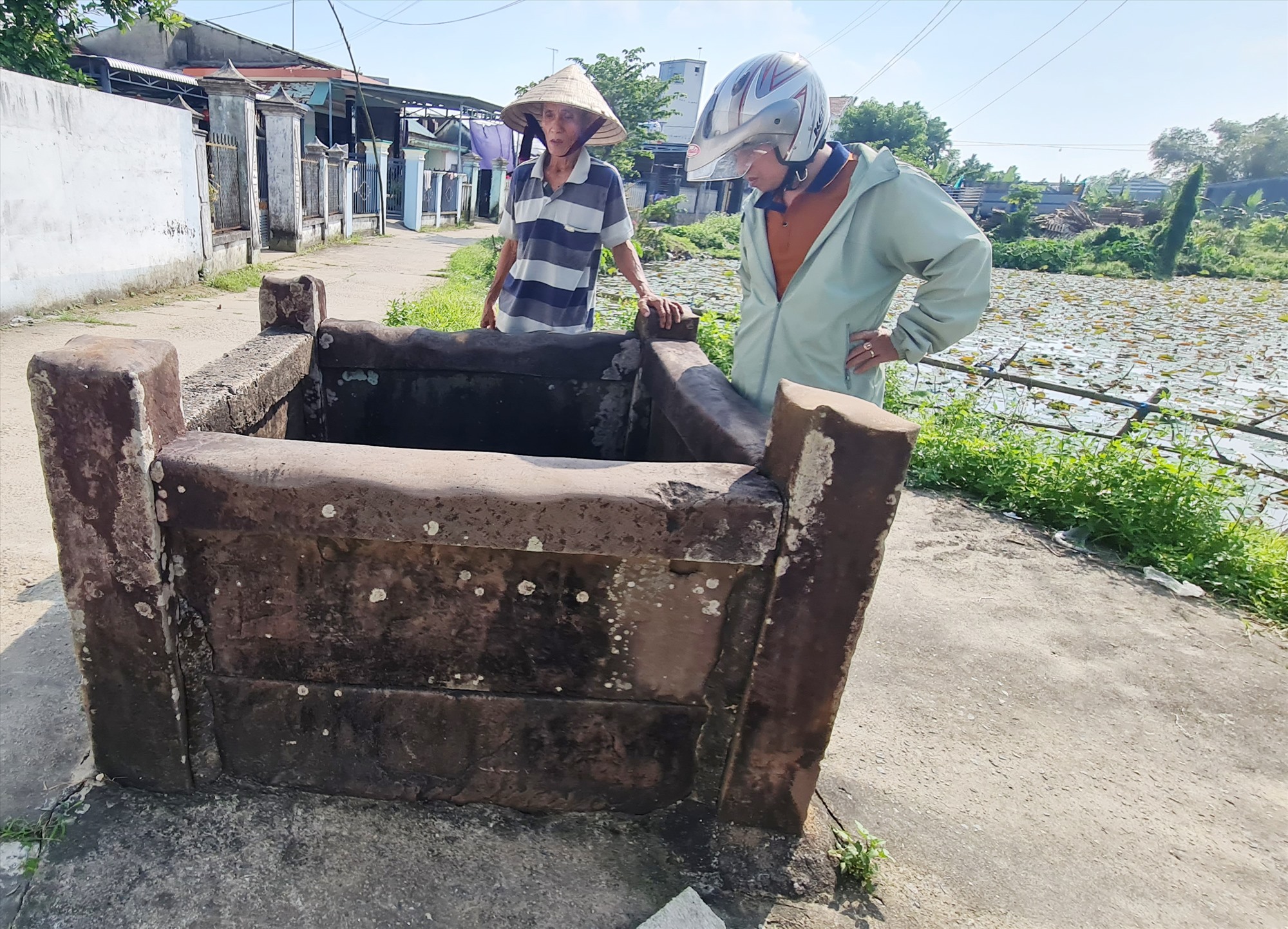On Song Binh land (Dai Quang commune, Dai Loc), there is still an ancient square well whose age cannot be determined, which has been protected and preserved by villagers for hundreds of years.

Up to now, there has been no research or document mentioning the square well of Song Binh village, Dai Quang commune. However, according to the elderly in the village, the square well has existed for a long time and this is the remaining Cham well.
According to observations, the square well in Song Binh village has a similar structure and shape to many square wells in Hoi An and Cu Lao Cham. The well has a square top and bottom, made of green stone, which are thick stone slabs about 1m wide and 0.5 - 0.6m thick. These stone slabs are joined together into cells, fitted into pre-made grooves, very tightly. The well is about 10m deep.
Mr. Le Tan (nearly 70 years old, Song Binh village) shared: “Perhaps the ancients were very knowledgeable about water sources, so the square well, after hundreds of years, still has a source of delicious and clear water. Even the type of stone used to make the well is very strange, it is a green stone, not found in the area. The stones are polished, assembled, and stacked delicately, not destroyed by time.”
According to Mr. Tan, the elderly also cannot know when the square well was built. They only heard from their grandparents that this was a Cham well, a Hoi well. Near the square well, there used to be an old tower foundation and a stele, which the villagers used to call Mound Thap.
“During the anti-American war, the enemy camped on the mountain top, plowed and bulldozed it, and when it rained, rocks and soil flooded down and covered Mound Thap. Now it is difficult for me to determine the exact location of Mound Thap, but I know that place,” said Mr. Tan.
The water in the square well has never dried up and is clear all year round, although many people today dig wells that are heavily contaminated with red and yellow alum. The people of Song Binh village always join hands to protect the square well.
With its architectural, historical and cultural values, it is necessary to conduct research and surveys on the square well of Song Binh village along with the architectural complex of Thap hill, the ancient temple located nearby that the local people call the mountain hamlet temple, where the custom of worshiping the village at the beginning and end of the year often takes place.
According to some documents, in Quang Nam , Cham wells in general and square wells in particular exist sporadically in some localities, most concentrated in Hoi An and Cu Lao Cham. In Dai Loc, Cham wells still remain scattered in some villages, but to date, research and archaeological work is still open.
According to Mr. Phan Van Trinh - Director of the Center for Culture, Information and Communication - Tourism of Dai Loc district, the square well of Song Binh village is a type of Cham well. In many localities of the district, there are still many scattered Cham wells, not just Song Binh.
These Cham wells need to be preserved and maintained by the people in the community and there needs to be surveys, assessments, and recommendations on how to preserve and promote the value of the relic. The People's Committee of Dai Quang commune needs to guide the people in protecting Cham wells, prepare a relic profile and propose the Department of Culture, Sports and Tourism and higher authorities to recognize the relic.
Source





































































































Comment (0)